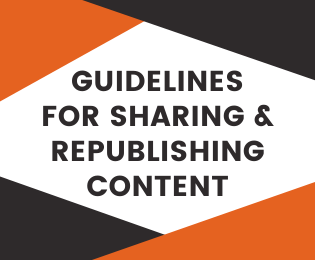HOW-TOS
How Direct Mail Enhances Omnichannel Strategies in Financial Sector
Explore how direct mail enhances omnichannel messaging for financial institutions, boosting trust, compliance, and personalization across the customer journey.
For years, the financial services industry leaned heavily on physical mail, emails, and call centers. But the rise of digital-first consumer behavior has changed how trust is built and how communication flows.
What began as a shift to email and SMS has now matured into full-scale omnichannel messaging strategies. Today, financial institutions engage customers through mobile apps, chatbots, web notifications, personalized portals, and in-branch kiosks, often within the same customer journey.
This evolution is driven by customer expectations. According to Capgemini’s 2025 World Retail Banking Report, 72% of customers expect personalized, consistent experiences across all channels, yet only 30% of financial institutions are delivering it. This gap has pushed leading banks and credit unions to rethink how they structure their communication, from siloed to synchronized.
It might seem like direct mail has faded into the background, but that’s not the case. In fact, its role is becoming more strategic than ever, especially as customers begin to tune out purely digital noise.
Direct Mail: The Center of Evolving Financial Omnichannel Ecosystem
Communication today is dominated by digital touchpoints. So, it’s easy to assume that direct mail has already phased out. But that assumption misses how the channel has quietly adapted and matured, especially in the financial services sector.
While email, SMS, and apps handle real-time interactions, direct mail now plays a distinct, strategic role: grounding high-stakes financial communication in a format that’s tangible, personal, and deeply trusted.
Why Financial Institutions Still Trust Direct Mail for High-Impact Communication
Despite the growth of digital-first channels, financial institutions continue to rely on direct mail for critical communications. It’s used for everything from account opening kits to policy documents, not just because of habit, but because physical mail still delivers higher trust and visibility than many digital messages.
And that trust translates into influence. A 2023 USPS study found that 90% of millennials trust direct mail more than digital ads, and 57% have made financial decisions based on a direct mail piece. For institutions navigating low digital open rates and crowded inboxes, these figures matter.
More importantly, financial brands are now combining direct mail with CRM and behavioral data. For example:
- A customer exploring mortgage rates online may receive a tailored print offer showing updated interest rates and pre-qualified terms.
- A user who browses retirement tools in-app could receive a customized mailer with a QR code linking to a digital planner.
This isn’t legacy outreach, it’s data-driven targeting, delivered through a high-trust channel.
How Direct Mail Strengthens Multi-Touch Omnichannel Experiences
Used effectively, direct mail becomes a physical anchor in a wider omnichannel strategy. It adds substance to the customer journey by bridging digital nudges with real-world touchpoints.
For instance, consider this multi-touch sequence:
- A customer receives an in-app alert about loan approval.
- They get a follow-up email with document links.
- Within days, a physical letter arrives, summarizing loan details, outlining repayment options, and including a QR code for scheduling consultations.
That final step, the printed letter, feels more personal and secure than a digital alert. And because it follows a sequence, it doesn’t feel random. It feels coordinated.
This is where direct mail earns its place in omnichannel messaging. It complements digital messages with credibility. It doesn’t interrupt the experience; it reinforces it.
The Synergy Between Direct Mail and Omnichannel Strategy
In leading financial institutions, direct mail no longer operates in isolation. Instead, it’s integrated into broader omnichannel workflows that span email, app notifications, web chat, and physical documents. The value of direct mail isn’t just in its tangibility; it’s in how well it supports continuity across all other touchpoints.
Reinforcing Brand Messaging Across Channels
Consistency is the key in finance. A user who sees a personalized offer in an app should recognize the same offer if they receive a follow-up email or a physical mailer. When the message is consistent across formats, trust increases, and friction drops.
For example, a regional credit union used a multichannel strategy to promote a new retirement savings plan:
- Step 1: The customer saw a teaser ad on their mobile banking dashboard.
- Step 2: An email with plan highlights followed two days later.
- Step 3: A week later, they received a printed mailer summarizing benefits with a QR code linking to a personalized investment calculator.
- Step 4: The next time they logged in, a chatbot offered to book a consultation.
Customers who received all four touches are more likely to book a planning session than those who only saw digital prompts.
Turning Mail into an Interactive Experience
Modern direct mail isn’t static. QR codes, personalized URLs, and NFC tags allow recipients to move from print to digital with a single scan. This not only simplifies conversion but also gives marketers rich attribution data.
Here’s how brands are applying it:
| Tactic | Function | Used by |
| QR code on mailer | Directs the user to the application or planner | Loan & investment offers |
| Personalized short URL | Tracks engagement, logs user action | Credit card pre-approvals |
| NFC-enabled print (less common) | Launches mobile app or pre-fills onboarding form | Premium banking services |
The integration allows direct mail to become a dynamic part of the digital journey, serving both acquisition and re-engagement goals.
Mapping Direct Mail in the Customer Journey
In the financial sector, trust is built through consistency, clarity, and compliance. Direct mail supports all three across every stage of the customer journey.
Unlike generic marketing blasts, financial direct mail is often triggered, personalized, and regulated, making it both a communication tool and a brand experience layer. From onboarding to renewals, it helps institutions meet regulatory obligations while reinforcing credibility.
Where Direct Mail Shows Up in the Customer Lifecycle
| Journey Stage | Direct Mail Use Case |
| Awareness | Product introductions, rate flyers, and co-branded partnership offers |
| Consideration | Loan estimates, comparison guides, retirement planning mailers |
| Conversion | Pre-approved credit card offers, personalized application kits |
| Onboarding | Welcome letters, account opening documentation |
| Retention & Loyalty | Policy renewals, annual portfolio summaries, VIP program invites |
| Compliance & Support | Regulatory disclosures, payment reminders, fraud alerts |
Why Mail Still Matters for Documentation and Compliance
Many regulatory communications such as loan approvals, KYC updates, and privacy notices, must be delivered physically or require written acknowledgement. Email isn’t always enough, especially when legal proof of delivery is needed.
Direct mail also supports accessibility. For certain customer segments, such as elderly clients or rural populations, printed materials remain more dependable than app alerts or emails that may go unread.
Enhancing Personalization Through CRM and Automation
Direct mail campaigns are now deeply integrated with CRM systems and marketing automation platforms. That means a customer’s profile, behavior, and preferences determine not just what gets sent but when and how often.
For instance:
- A new homeowner might receive a printed insurance quote within days of finalizing a mortgage online.
- A dormant savings account might trigger a physical reactivation offer with pre-filled forms and QR-based sign-in.
- Annual statements can be automatically generated and mailed based on user settings and regulatory deadlines.
This integration ensures direct mail doesn’t feel random. It becomes part of a personalized, omnichannel messaging loop that strengthens the customer’s connection with the brand.
Direct Mail as a Strategic Channel in Financial CX
For financial institutions, direct mail is a strategic component of a modern, customer-centric communication ecosystem. Today, when attention spans are fragmented across screens, direct mail offers something unique: permanence, credibility, and higher trust.
When paired with digital channels such as email, app notifications, SMS, or chatbot workflows, direct mail reinforces brand messaging and drives action.
More importantly, direct mail is now fully integrated with CRM and marketing automation platforms. It allows financial brands to deliver personalized, data-driven messages, whether it’s to acquire, retain, or re-engage customers without losing compliance or context.
For CX leaders in banking, insurance, or fintech, the message is clear: direct mail doesn’t compete with digital. It completes it.
About the Guest Author
 Nidhi Prakash is a B2B content marketing specialist with over seven years of experience, particularly in SaaS and customer marketing. She has contributed thought leadership pieces and industry insights drawn from conversations with marketing leaders and practitioners. Currently, she leads content strategy at SMS Magic, shaping the brand’s voice and messaging.
Nidhi Prakash is a B2B content marketing specialist with over seven years of experience, particularly in SaaS and customer marketing. She has contributed thought leadership pieces and industry insights drawn from conversations with marketing leaders and practitioners. Currently, she leads content strategy at SMS Magic, shaping the brand’s voice and messaging.
Outside of work, Nidhi is an avid reader and a passionate traveler, always seeking new stories—both on the page and on the road.
She is always reachable on LinkedIn.

































